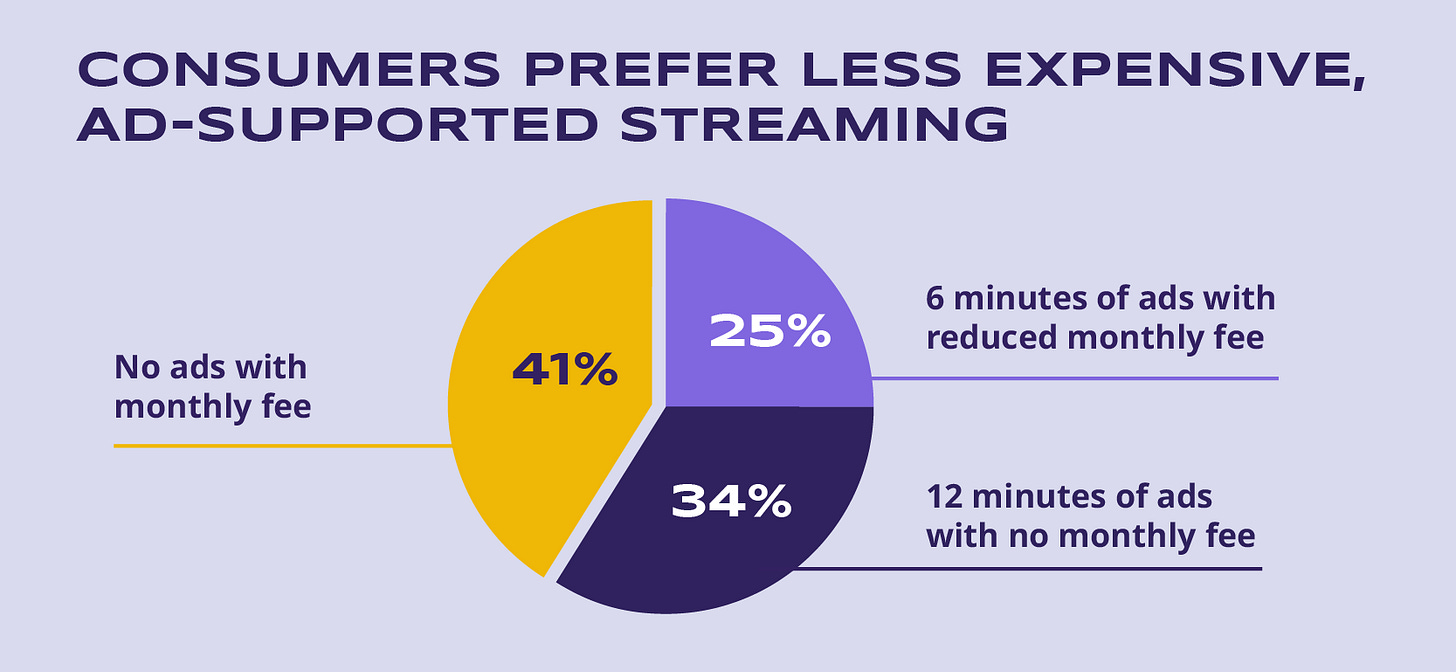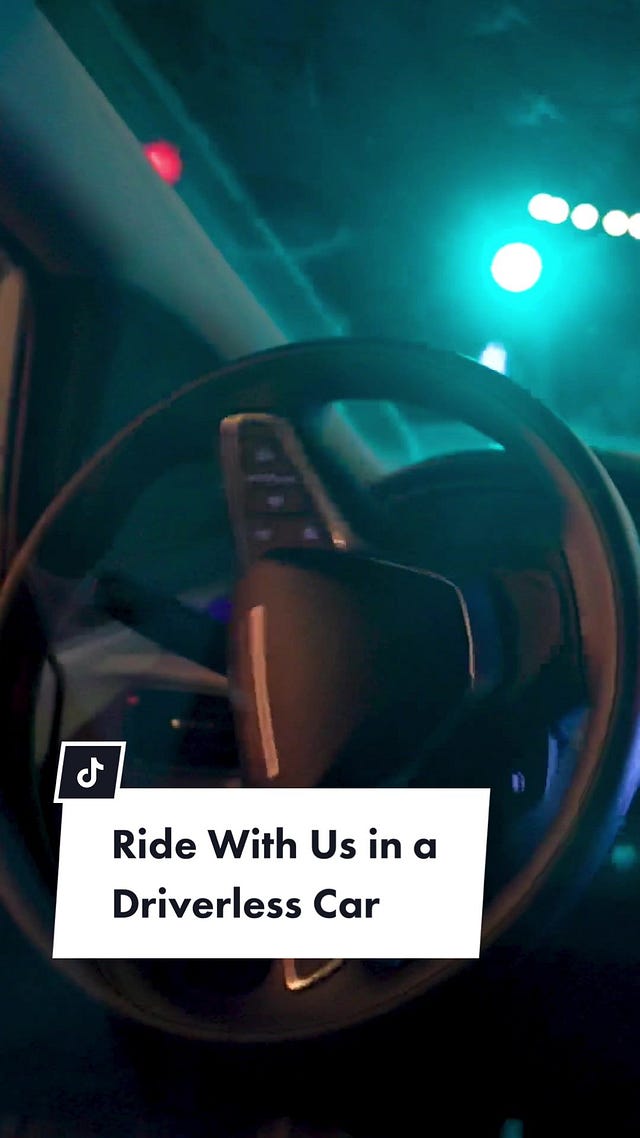What's Next, Now: May 2023
This month, our crystal ball predicts a cable news exodus, the revival of the autonomous car, a turning point for paywalls, and more.
The firings of Tucker Carlson, a titan at Fox News, and Don Lemon from CNN have created a reckoning for cable news — the moves mark a definitive end to an era where Carlson and his counterparts ruled the airwaves. No replacement is currently in sight to revive the waning industry.
But if TV audiences are leaving cable, where are they going? The obvious answer is streaming services. Last year marked the first time streaming watch time overtook cable viewership. The proliferation and popularity of online TV platforms has been on the rise for years, and all signs point to a streaming-dominated future.

But that’s not the only destination for cable emigrants — local, over-the-air stations are also getting a boost. Next season, the NBA’s Phoenix Suns and WNBA’s Phoenix Mercury will end their relationship with their regional cable sports network and air all games on local broadcast channels. For many, these local stations are more trustworthy than national networks. In a recent survey, 44% of Americans reported high emotional trust in local news, compared to just 21% in national publications.
For news junkies, social media is now a number one destination — adults under 30 even report using social media as their main source of news. (That likely influenced Tucker Carlson's plans to start his own news show on Twitter.) Podcasts are also proving to be a trusted news source — a new Pew Research survey found 87% of Americans who hear news on podcasts expect it to be accurate.
The slow death of cable has viewers migrating to other platforms. Households are no longer tuning in to the same news broadcasts each night to get their information. These moves reflect a larger cultural shift that has been building for years: the end of mainstream culture. With the rise of the internet and social media, more information is available and accessible than ever before. Trends rise and fall at rapid rates, and it’s easy to find your niche in a fragmented landscape, instead of relying on cookie-cutter sources.
To avoid being left behind, brands need to employ a similar strategy to diversify where and how they show up. Increased precision and a willingness to expand beyond the mainstream will be the key to staying relevant as audiences evolve.
In late April, TIME announced it will dismantle its digital paywall as of June 1, with the goal of reaching more audiences and increasing access. TIME intends to supplement subscription revenue by producing ad-supported content. Quartz made a similar announcement in April of 2022, dropping its paywall in hopes to reach new audiences.
In line with this shift to more ad-supported content, Disney and Netflix have both rolled out ad-supported subscriptions. If the Rocket Money ads are anything to go by, we’re all subscribing to too many things, leading to subscription fatigue. A Deloitte survey found 44% of consumers canceled at least one paid service in the last six months. Free ad-supported platforms are the fastest-growing aspect of the streaming business right now, and according to Deloitte, 59% of users were happy to watch a few ads in exchange for a less expensive, or even free, subscription.

For media companies, ad-supported tiers create a win-win for themselves, advertisers, and consumers alike. Organizations can tap into new audiences and revenue streams, advertisers can reach new customers, and consumers gain increased access. As consumers reach a breaking point with subscription fatigue and begin shrinking their subscription footprint, free, ad-supported tiers could be the answer.
Late last year, industry experts were pessimistic about the future of the self-driving car. Investment had dropped nearly 60%, and several automakers announced a strategy shift from fully autonomous cars to the easier-to-achieve driver assistance systems, which still require a human operator. The financial burden was too high, especially as many automakers were simultaneously reaching deep into their pockets to fund the move to electric vehicles.
But not everyone abandoned their robo-taxi dreams, and now these autonomous cars are hitting the roads. Cruise, owned by GM, recently announced it is expanding its paid robo-taxi service (currently only available in San Francisco) to 24-hour availability. While some limitations still apply to the general public, Cruise power users can now hail the robotic cab any time of day, in any part of the city — just as they would a regular cab or rideshare service.
And in a world first, a fleet of five self-driving buses will carry around 10,000 passengers per week in Edinburgh, Scotland, beginning this month. The buses will drive entirely autonomously — with staff overseeing the bus and assisting passengers.
While some automakers are ready to put driverless cars on the roads, consumers may not quite be ready to let go of the wheel. A recent poll found 68% of people are afraid of self-driving cars. Headlines tend to focus on the grisly accidents, adding to the air of anxiety. But studies have shown that fully self-driving cars cause surprisingly little disruption. For automakers ready to take the autonomous plunge, solving the robots’ PR problems will be the first order of business.
It's been six months since ChatGPT first made headlines and it’s catching on like wildfire, forcing businesses to wrangle with how they want to use it — or not.
In the first real-world study of generative AI in the workplace, researchers from Stanford and MIT found AI tools like chatbots helped boost worker productivity by 14%. The improvement was especially pronounced for novice and low-skilled workers, who saw a 35% increase. Organizations from IBM to Walmart are embracing AI and its promise of added efficiency, actively incorporating ChatGPT into their products and processes.
But not all businesses are ready to let AI take over. Large language models (LLMs) like ChatGPT learn from material fed to them, meaning any information entered into the chatbot will become part of its dataset and could be shared with others. This could become a security concern if any sensitive company details are shared with the bot. Despite this, the use of unauthorized AI tools is common, even among security experts. In a recent survey, 80% of security professionals admitted to using AI tools, even though 78% felt their organization would request they cease use of the software if they became aware of it. Due to these concerns, some companies are taking an official stand against the use of ChatGPT, including Samsung, which banned all use of it.
ChatGPT is the fastest-growing digital platform in history, accumulating more than 100 million users in its first two months of availability. Whether businesses like it or not, chatbots and generative AI are becoming ubiquitous in the working world. As the dust settles, brands need to confirm how they will or won’t incorporate the tech and amplify their guidelines internally.
Elon Musk has passed the reins on to Linda Yaccarino, former NBCUniversal advertising exec: She is now CEO of Twitter.
One of the main demands of striking Hollywood writers is regulation of material produced using AI or similar technologies.
Fox will air 29 Women’s World Cup games on its main channel, including more primetime spots than ever before.
Two years after actors Ryan Reynolds and Rob McElhenney purchased Welsh soccer club Wrexham FC, the team secured promotion to the next-highest league after a 15-year absence.
After shuttering its entire news division, BuzzFeed took a page out of Tom Wambsgans’s book and announced plans to up the amount of content it produces via independent creators. This move will allow BuzzFeed to keep its headcount low and take advantage of creators’ built-in audiences and trend-forward content.
Want to hear more? Check out our free newsletter The Spark for the biggest digital marketing updates, tips, and trends of the week in your inbox. From SEO to social media to content marketing, we’ve got you covered.
Copyright © 2023 Tier One Partners is a women-owned full-service PR, content, and digital marketing agency. We work with innovators in B2B and B2C technology, digital healthcare, financial services, energy tech, and manufacturing to develop award-winning creative, data-driven strategies that propel them to industry leader status. From day one, we’re committed to earning our clients’ trust, sharing their vision, and embedding their purpose into everything we do. To learn more, visit wearetierone.com.
















